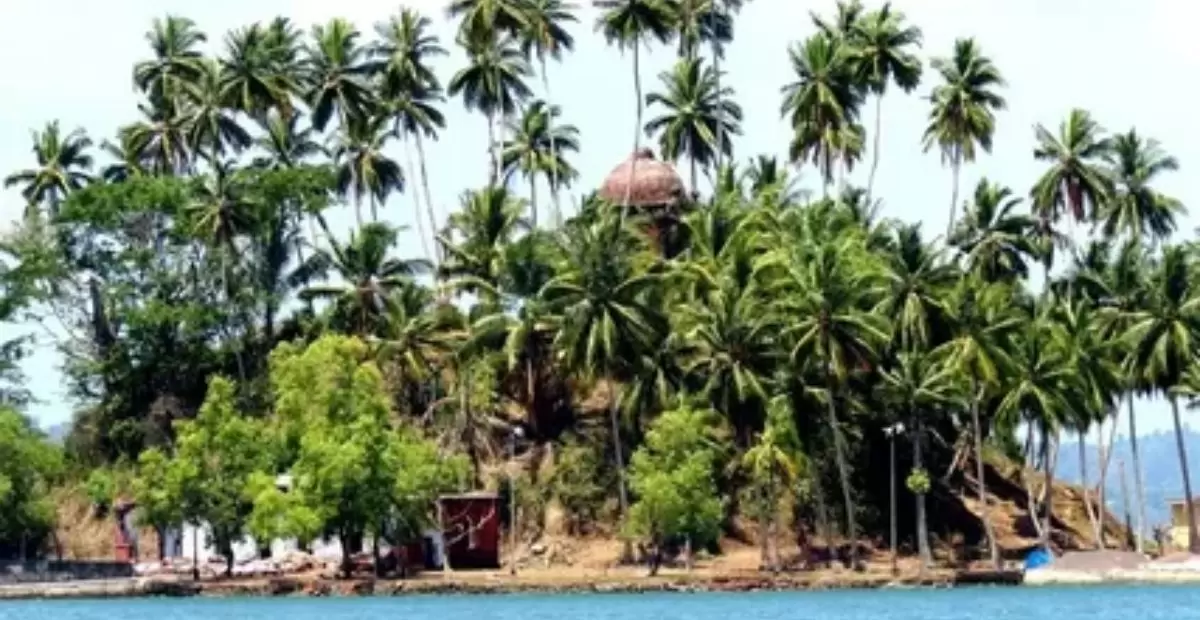Jamaica, a vibrant Caribbean island known for its stunning beaches, rich culture, and lively music scene, attracts millions of visitors each year. However, timing your visit can significantly impact your overall experience. While there’s no definitive “worst” time, certain periods may present challenges that could dampen your vacation plans. In this comprehensive guide, we’ll explore the factors to consider when determining the ideal time to visit this tropical paradise.
Rainy Season: Embracing the Island’s Wet Charm
The Caribbean’s rainy season typically spans from May to November, with the peak occurring between September and November. During this period, Jamaica experiences higher-than-average rainfall, which can lead to occasional torrential downpours and thunderstorms.
While the wet weather may seem like a deterrent, it’s essential to remember that Jamaica’s tropical climate ensures that these showers are often short-lived, with sunny spells following shortly after. The island’s lush rainforests and breathtaking waterfalls are at their most vibrant during this time, offering a unique and enchanting natural spectacle.
Additionally, the rainy season coincides with lower tourist numbers, making it an ideal time for travelers seeking a more authentic and quieter Jamaican experience. With fewer crowds, you’ll have the opportunity to explore popular attractions at a leisurely pace and potentially benefit from discounted rates on accommodation and activities.
Embracing the Wet Season: Pros and Cons
| Pros | Cons |
|---|---|
| Lush, verdant landscapes | Increased likelihood of rain showers and thunderstorms |
| Fewer crowds and lower prices | Potential disruptions to outdoor activities |
| Opportunity to experience authentic Jamaican culture | Some businesses may operate on reduced hours or be closed |
| Spectacular waterfalls and rainforest hikes |
Remember, while the rainy season may bring occasional showers, Jamaica’s tropical climate ensures that these are often short-lived, with sunny spells following shortly after. Embracing the island’s wet charm can lead to unique and memorable experiences.
Crowded Tourist Season: Navigating Peak Periods
Jamaica’s peak tourist season typically runs from mid-December to mid-April, coinciding with the dry season and the winter months in many parts of the world. During this time, the island experiences an influx of visitors seeking to escape the colder climates and bask in Jamaica’s warm, sunny weather.
While the peak season offers ideal beach conditions and a vibrant atmosphere, it also comes with its share of challenges. Popular tourist destinations can become overcrowded, leading to long lines, limited availability for accommodations and activities, and potentially higher prices.
Peak Season Considerations
| Pros | Cons |
|---|---|
| Ideal weather conditions for beach activities | Overcrowded beaches and attractions |
| Lively atmosphere with numerous events and festivals | Higher prices for accommodations and activities |
| Abundant opportunities for outdoor adventures | Increased competition for reservations and limited availability |
To navigate the peak season successfully, it’s crucial to plan well in advance, book accommodations and activities early, and be prepared for larger crowds. Alternatively, you may consider visiting during the shoulder seasons (late April to mid-December), which offer a balance between good weather and fewer crowds.
Hurricane Season: Preparation is Key
The Atlantic hurricane season officially runs from June 1st to November 30th, with the peak occurring between August and October. During this period, Jamaica, like other Caribbean islands, faces an increased risk of tropical storms and hurricanes.
While direct hits are relatively rare, the potential for disruptions to travel plans, temporary business closures, and weather-related incidents should be considered when planning your visit during this time. However, with proper preparation and vigilance, the impact of hurricane season can be minimized.
Hurricane Season Considerations
| Pros | Cons |
|---|---|
| Lower prices and fewer crowds | Increased risk of tropical storms and hurricanes |
| Opportunity to experience the island’s resilience and community spirit | Potential disruptions to travel plans and services |
| Some businesses may operate on reduced hours or be closed |
If visiting Jamaica during hurricane season, it’s essential to closely monitor weather updates, purchase travel insurance, and have a contingency plan in place. Additionally, you may want to consider staying at hurricane-resistant accommodations and being prepared to adjust your itinerary if necessary.
Consideration of Local Events: Embracing the Cultural Experience
Jamaica is a vibrant island with a rich cultural heritage, and many local events and festivals take place throughout the year. These celebrations can significantly impact your travel experience, both positively and negatively.
For example, the Carnival season in Jamaica typically occurs in April and May, attracting large crowds and lively celebrations. While this can be an exciting time to witness the island’s vibrant culture, it may also lead to increased prices, limited availability of accommodations, and larger crowds at popular destinations.
On the other hand, events like the Reggae Sumfest in July or the Jamaica Food and Drink Festival in October can offer unique cultural experiences and opportunities to immerse yourself in the local traditions.
Local Events: Planning Ahead
| Pros | Cons |
|---|---|
| Opportunity to experience authentic Jamaican culture and traditions | Increased crowds and potential for higher prices |
| Lively atmosphere with music, food, and celebrations | Limited availability of accommodations and activities |
| Unique experiences and memories | Potential disruptions to transportation and services |
When planning your trip to Jamaica, it’s advisable to research local events and festivals that may coincide with your intended travel dates. This will allow you to make informed decisions and potentially adjust your itinerary to avoid or embrace these occasions based on your preferences.
Temperature and Humidity: Striking a Comfortable Balance
Jamaica’s tropical climate ensures warm temperatures year-round, with average highs ranging from the mid-80s to low 90s Fahrenheit (29-33°C). However, the island’s humidity levels can vary throughout the year, potentially impacting your comfort levels.
During the summer months (June to August), the combination of high temperatures and increased humidity can make outdoor activities more challenging, especially for those unaccustomed to such conditions. This period may be less ideal for travelers who are sensitive to heat and prefer drier conditions.
On the other hand, the winter months (December to April) offer more comfortable temperatures and lower humidity levels, making it an ideal time for outdoor adventures and beach activities.
Temperature and Humidity Considerations
| Pros (Winter Months) | Cons (Summer Months) |
|---|---|
| Comfortable temperatures and lower humidity | High temperatures and increased humidity |
| Ideal conditions for outdoor activities and beach days | Potential discomfort during outdoor activities |
| Reduced risk of heat-related issues | Increased risk of heat-related illnesses |
When planning your trip to Jamaica, it’s essential to consider your personal preferences and tolerance for heat and humidity. If you’re more sensitive to these conditions, the winter months may be the most comfortable time to visit. However, if you don’t mind the warmer temperatures and higher humidity, the summer months can still offer an enjoyable tropical experience.
Budget-Friendly Time To Visit Jamaica: Maximizing Your Travel Dollars
For budget-conscious travelers, timing your visit to Jamaica can significantly impact your overall costs. The island’s peak tourist season, which runs from mid-December to mid-April, typically sees higher prices for accommodations, flights, and activities due to increased demand.
However, the shoulder seasons (late April to mid-December) and the rainy season (May to November) can offer more affordable options. During these periods, you may find discounted rates on hotels, resorts, and airfares, as well as reduced prices for activities and tours.
Additionally, the summer months (June to August) can be an excellent time to find last-minute deals and special offers, as many travel providers aim to attract visitors during the slower season.
Budget-Friendly Travel Considerations
| Pros | Cons |
|---|---|
| Lower prices for accommodations, flights, and activities | Increased likelihood of rain showers (during the rainy season) |
| Fewer crowds and more availability | Some businesses may operate on reduced hours or be closed |
| Opportunity for last-minute deals and special offers | Potential disruptions due to hurricanes (during hurricane season) |
By carefully researching and planning your trip during the off-peak or shoulder seasons, you can enjoy Jamaica’s vibrant culture, stunning landscapes, and world-class beaches without breaking the bank. Additionally, consider being flexible with your travel dates to take advantage of the best deals and promotions.
Why People Visit Jamaica: Uncovering the Island’s Allure
Jamaica’s enduring appeal as a top travel destination stems from its unique blend of natural beauty, rich cultural heritage, and vibrant atmosphere. From pristine beaches and lush rainforests to pulsating music and flavorful cuisine, the island offers a captivating experience that draws visitors from around the world.
Unforgettable Beaches and Landscapes
One of Jamaica’s most famous attractions is its stunning beaches, renowned for their soft, white sand and crystal-clear waters. Whether you prefer the lively atmosphere of famous spots like Negril’s Seven Mile Beach or the tranquility of secluded coves, Jamaica’s coastline offers something for every beach lover.
Beyond the shores, the island’s interior boasts a diverse array of landscapes, including verdant rainforests, cascading waterfalls, and majestic mountains. Explore the natural wonders of places like the Blue Mountains, renowned for their world-famous coffee, or the awe-inspiring Dunn’s River Falls, where you can climb up the natural terraced cascades.
Vibrant Culture and Music Scene
Jamaica’s rich cultural heritage is deeply rooted in its history and traditions, offering visitors a unique and immersive experience. From the infectious rhythms of reggae music to the mouthwatering flavors of jerk cuisine, the island’s culture is a feast for the senses.
Explore the local markets, where you can find vibrant handcrafted items and engage with friendly locals. Attend a reggae concert or visit the birthplace of legendary artists like Bob Marley to truly appreciate the island’s musical legacy.
Adventure and Outdoor Activities
Jamaica’s diverse landscapes provide ample opportunities for adventure and outdoor activities. Embark on a hiking excursion through the lush rainforests, go river tubing or rafting on the island’s winding rivers, or indulge in water sports like snorkeling and scuba diving to explore the vibrant marine life.
For thrill-seekers, Jamaica offers adrenaline-pumping activities like zip-lining through the canopy, cliff jumping, or even swimming with dolphins in their natural habitat.
Relaxation and Rejuvenation
For those seeking a more laid-back experience, Jamaica offers a perfect escape for relaxation and rejuvenation. Indulge in luxurious spa treatments, lounge on the beach with a good book, or simply soak up the island’s laid-back vibe and friendly atmosphere.
The island’s rich cultural heritage also extends to its wellness traditions, with opportunities to experience holistic therapies and practices rooted in Jamaican traditions.
With its diverse offerings, Jamaica captures the hearts of travelers seeking adventure, culture, relaxation, or a combination of all three. Whether it’s your first visit or a return trip, the island promises unforgettable experiences and memories that will keep you coming back for more.
Traveling Tips for Visit Jamaica: Maximizing Your Experience
While Jamaica is a beloved destination, there are several travel tips and considerations to keep in mind to ensure a smooth and enjoyable visit. From navigating the island’s diverse regions to embracing local customs and etiquette, these insights can help you make the most of your Jamaican adventure.
Explore Beyond the Resorts
While Jamaica’s all-inclusive resorts offer a convenient and comfortable vacation experience, venturing beyond the resort boundaries can provide a more authentic and immersive cultural experience. Explore local towns and villages, interact with friendly locals, and discover hidden gems that offer a deeper appreciation for the island’s rich heritage.
Embrace Local Customs and Etiquette
Jamaica has a vibrant and unique culture, and respecting local customs and etiquette can go a long way in enhancing your experience. Familiarize yourself with local dress codes, especially when visiting religious sites or rural areas, and be mindful of cultural norms and behaviors.
Stay Safe and Informed
Like any travel destination, it’s essential to exercise caution and stay informed about potential safety concerns. Research reputable travel advisories, familiarize yourself with local laws and regulations, and take common-sense precautions to ensure a safe and enjoyable trip.
Sample the Local Cuisine
Jamaican cuisine is a delightful fusion of flavors and influences, and sampling local dishes is a must-do for any visitor. From the iconic jerk chicken and ackee and saltfish to delectable patties and refreshing tropical drinks, the island’s culinary offerings are sure to tantalize your taste buds.
Embrace the Laid-Back Vibe
Jamaica is renowned for its laid-back and relaxed atmosphere, often referred to as “island time.” Embrace this easygoing pace and let go of the stress and urgency of daily life. Slow down, soak up the vibrant surroundings, and immerse yourself in the island’s carefree spirit.
Respect the Environment
Jamaica’s natural beauty is one of its greatest assets, and it’s essential to respect and protect the island’s delicate ecosystems. Follow responsible tourism practices, such as using eco-friendly products, properly disposing of waste, and minimizing your environmental impact during outdoor activities.
By incorporating these travel tips into your Jamaican adventure, you’ll not only enhance your overall experience but also show respect for the island’s culture, people, and natural wonders, ensuring a memorable and responsible visit.
Best Time To Visit Jamaica: Finding the Perfect Balance
After considering the various factors that can impact your Jamaican vacation, determining the best time to visit can be a delicate balancing act. While there is no definitive “perfect” time, certain periods may align better with your preferences and travel goals.
Peak Season (Mid-December to Mid-April)
The peak season, which coincides with the dry season and winter months in many parts of the world, offers ideal weather conditions for beach activities and outdoor adventures. However, it’s also the busiest and most crowded period, with higher prices and limited availability for accommodations and activities.
| Pros | Cons |
|---|---|
| Warm and sunny weather, perfect for beach days | Overcrowded beaches and attractions |
| Lively atmosphere with numerous events and festivals | Higher prices for accommodations and activities |
| Optimal conditions for outdoor activities | Increased competition for reservations and limited availability |
Shoulder Season (Late April to Mid-December)
The shoulder season, which falls between the peak and low seasons, can offer a happy medium for travelers. While the weather remains favorable, with moderate temperatures and lower humidity, you’ll also benefit from fewer crowds and potentially lower prices.
| Pros | Cons |
|---|---|
| Comfortable weather for outdoor activities | Increased likelihood of rain showers |
| Fewer crowds and lower prices | Some businesses may operate on reduced hours or be closed |
| Opportunity to experience authentic Jamaican culture |
Low Season (May to November)
The low season, which coincides with the rainy season and hurricane season, offers the most affordable rates and the fewest crowds. However, it’s essential to weigh the potential weather-related disruptions and plan accordingly.
| Pros | Cons |
|---|---|
| Lowest prices for accommodations, flights, and activities | Increased likelihood of rain showers and hurricanes |
| Fewer crowds and more availability | Potential disruptions to travel plans and services |
| Opportunity for last-minute deals and special offers | Some businesses may operate on reduced hours or be closed |
The low season, which coincides with the rainy season and hurricane season, offers the most affordable rates and the fewest crowds. However, it’s essential to weigh the potential weather-related disruptions and plan accordingly.
Ultimately, the best time to visit Jamaica depends on your personal preferences, budget, and travel goals. If you prioritize ideal weather conditions and a lively atmosphere, the peak season may be the best fit, despite the higher costs and crowds. If you’re seeking a more authentic and budget-friendly experience, the shoulder or low seasons could be ideal, as long as you’re prepared for potential weather-related challenges.
By carefully weighing the pros and cons of each period and planning accordingly, you can optimize your Jamaican vacation and create unforgettable memories in this Caribbean paradise.
Conclusion: Embrace the Rhythm of Jamaica
Jamaica, with its vibrant culture, stunning natural beauty, and infectious energy, offers a travel experience like no other. While determining the ideal time to visit can be influenced by various factors, embracing the island’s unique rhythms and customs can lead to a truly memorable and enriching adventure.
Whether you opt for the peak season’s ideal weather and lively atmosphere, the shoulder season’s balance of comfortable temperatures and fewer crowds, or the low season’s budget-friendly rates and opportunities for authenticity, Jamaica promises to captivate you with its warmth, hospitality, and endless charms.
Remember, preparation is key to ensuring a smooth and enjoyable visit. Research local events, monitor weather conditions, and plan your itinerary accordingly. Embrace the island’s laid-back vibe, immerse yourself in the rich cultural traditions, and savor the flavors and rhythms that make Jamaica truly unique.
So, pack your bags, open your heart, and get ready to experience the enchanting spirit of Jamaica – a destination that will leave an indelible mark on your soul and have you longing to return time and time again.
FAQs Relating to Worst Time To Visit Jamaica
When is the hurricane season in Jamaica?
The Atlantic hurricane season officially runs from June 1st to November 30th, with the peak occurring between August and October. During this period, Jamaica faces an increased risk of tropical storms and hurricanes.
Does the hurricane season affect the entire island equally?
While direct hits are rare, the impact of hurricane season can vary across different regions of Jamaica. Coastal areas may experience more significant effects, such as storm surges and flooding, while inland areas may be less affected.
Are there months with a higher risk of heavy rainfall?
The rainy season in Jamaica typically spans from May to November, with the peak occurring between September and November. During this period, the island experiences higher-than-average rainfall, which can lead to occasional torrential downpours and thunderstorms.
Do hurricanes disrupt transportation and services?
Severe hurricanes or tropical storms can potentially disrupt transportation services, such as flights and cruise ship operations, as well as temporarily close businesses and attractions. It’s essential to monitor weather updates and have contingency plans in place when visiting during hurricane season.
Are there crowded periods to avoid?
Jamaica’s peak tourist season, which runs from mid-December to mid-April, tends to be the most crowded period. Popular tourist destinations, beaches, and attractions may experience larger crowds, limited availability, and higher prices during this time.
Is there a risk of heat-related issues during certain months?
Jamaica’s tropical climate ensures warm temperatures year-round, but the summer months (June to August) can be particularly hot and humid. Visitors who are sensitive to heat or unaccustomed to high temperatures may want to consider visiting during the cooler winter months (December to April) to avoid potential heat-related discomfort or health issues.
Recommended For Post:
- The Best Family Beaches In Florida
- What Is The Best Time To Go To The Beach?
- Best time to visit Thailand
- 10 Float Trips Ahoy Near Me: The Best Guide







